Abstract
The authors have performed a comparative study of the efficacy of various in-feed medications for the treatment of 5- to 6-week-old specific pathogen-free (SPF) piglets experimentally infected on day 1 with Mycoplasma hyopneumoniae, on day 8 with Pasteurella multocida (serotype A), and on day 15 with Actinobacillus pleuropneumoniae (serotype 2). The treatment started on day 9 and continued for 12 consecutive days, then the piglets were euthanized for examination of macroscopic, histologic, and pathologic lesions and for the presence of mycoplasmas and bacteria in the lungs. Based on the results of clinical observations (respiratory signs, rectal temperature, body weight gain, and feed conversion efficiency), macroscopic and histologic lesions of the lungs, and microbiologic findings, the best results were obtained by treatment of pigs with Econor + chlortetracycline, followed by Tetramutin, Pulmotil, Cyfac, and lincomycin + chlortetracycline.
Full text
PDF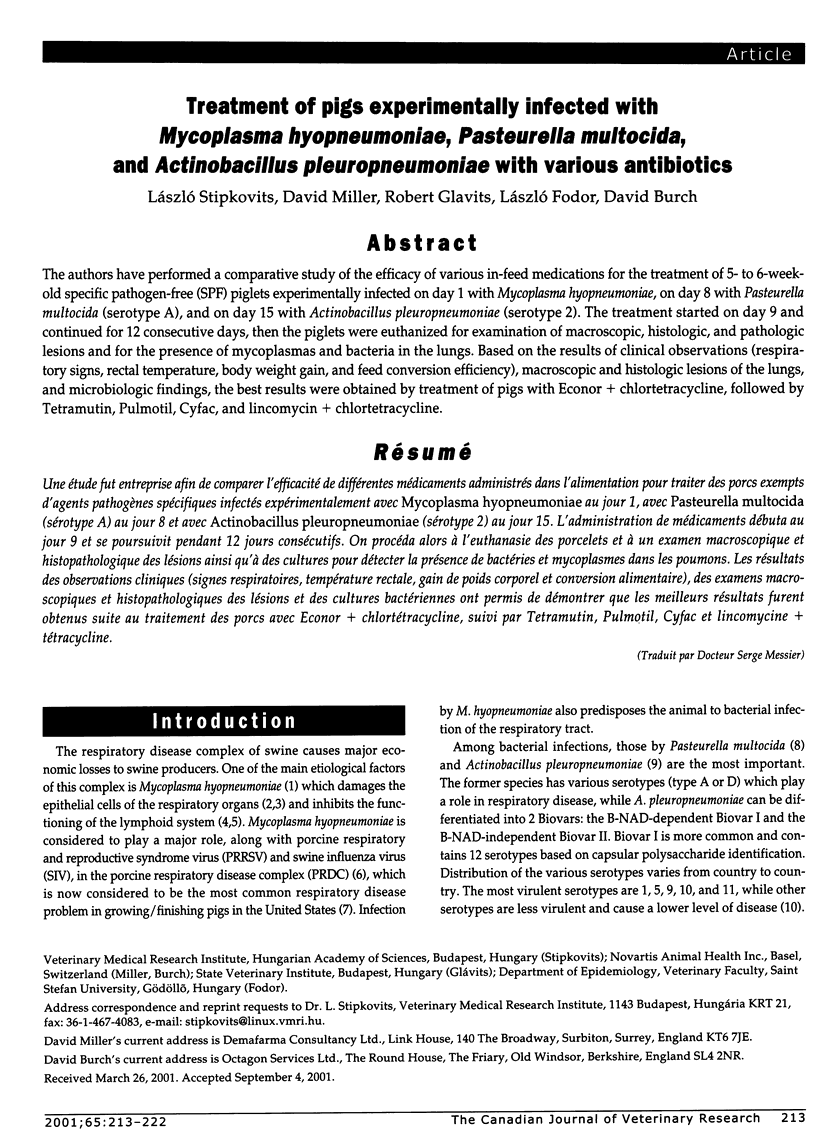
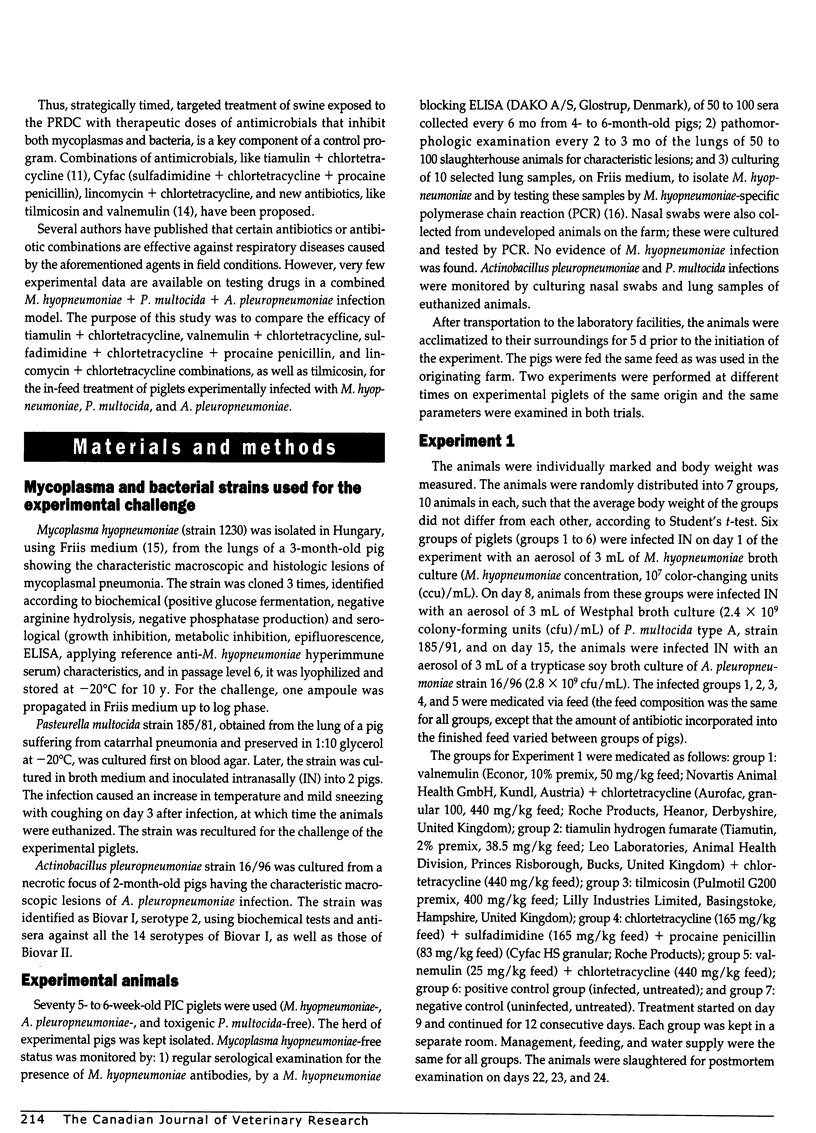

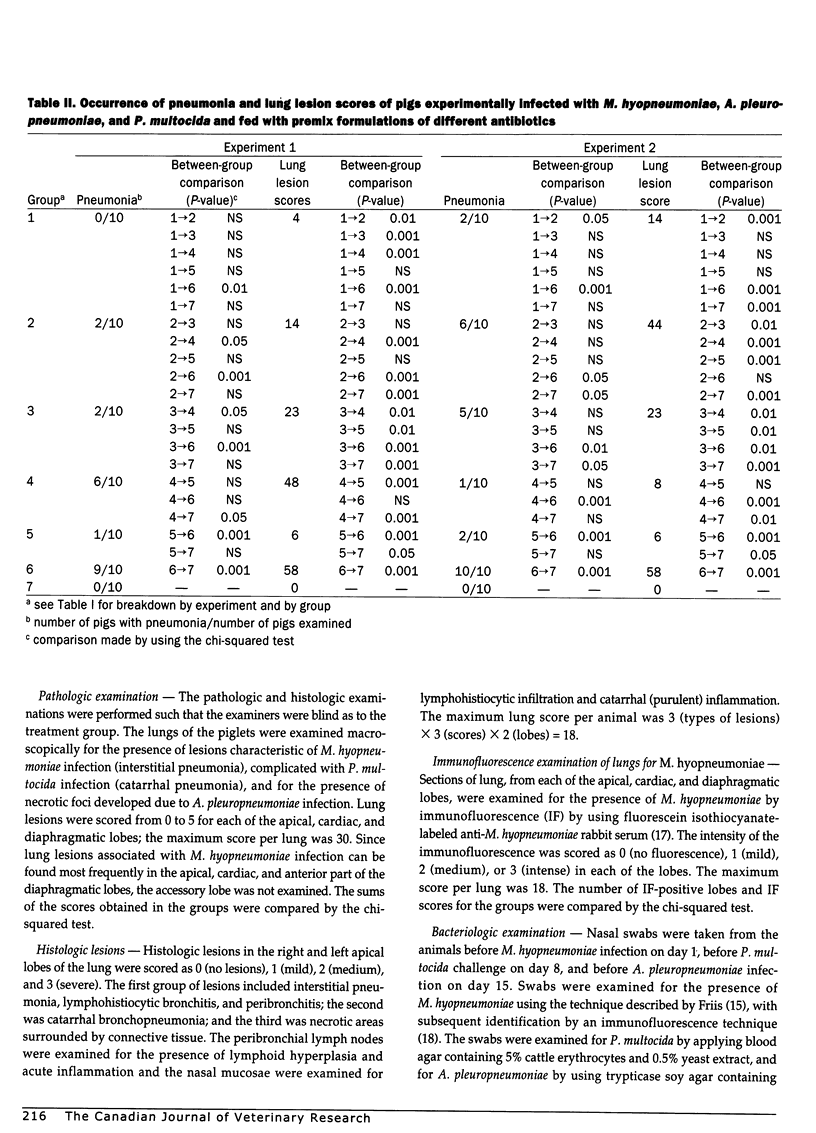
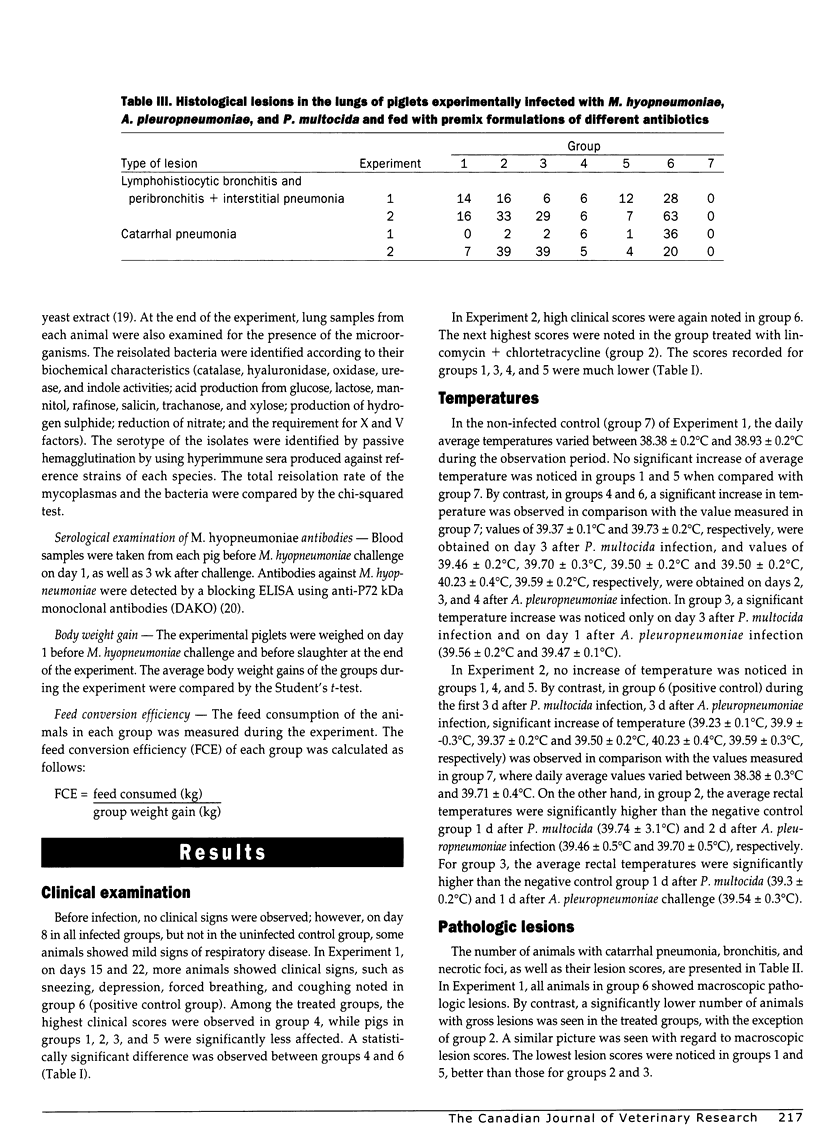
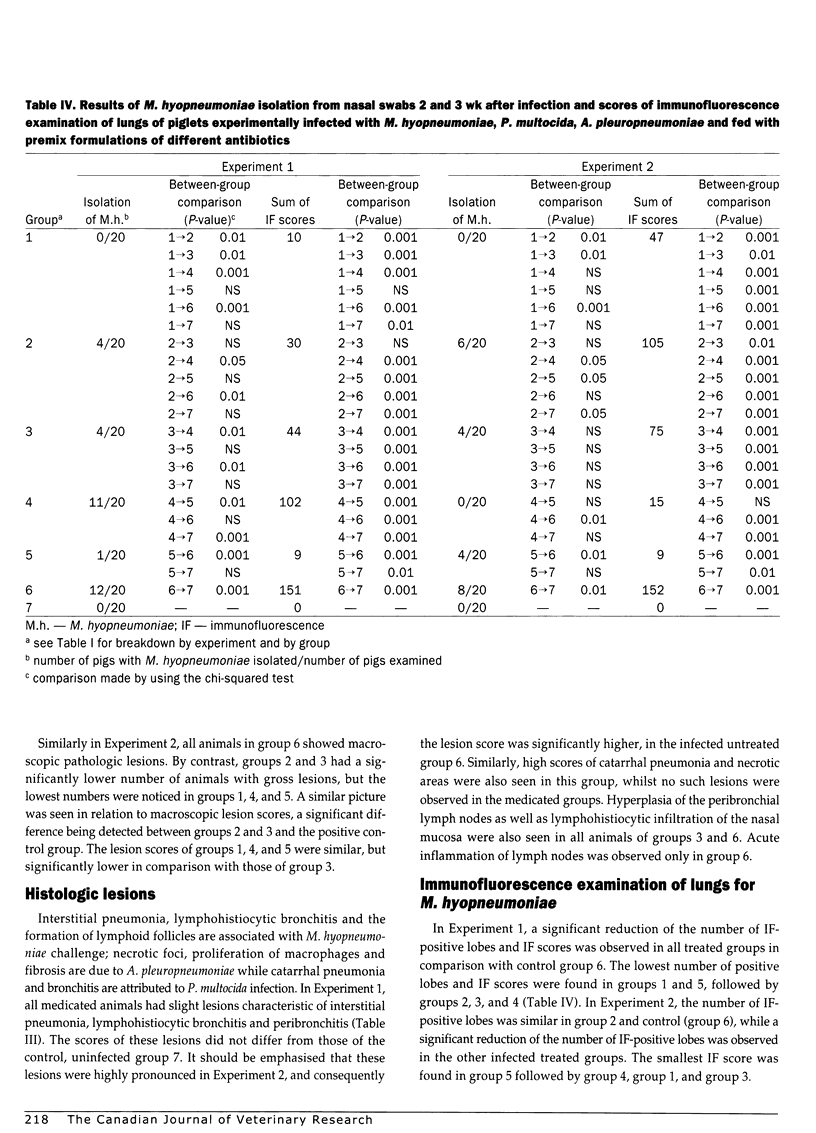


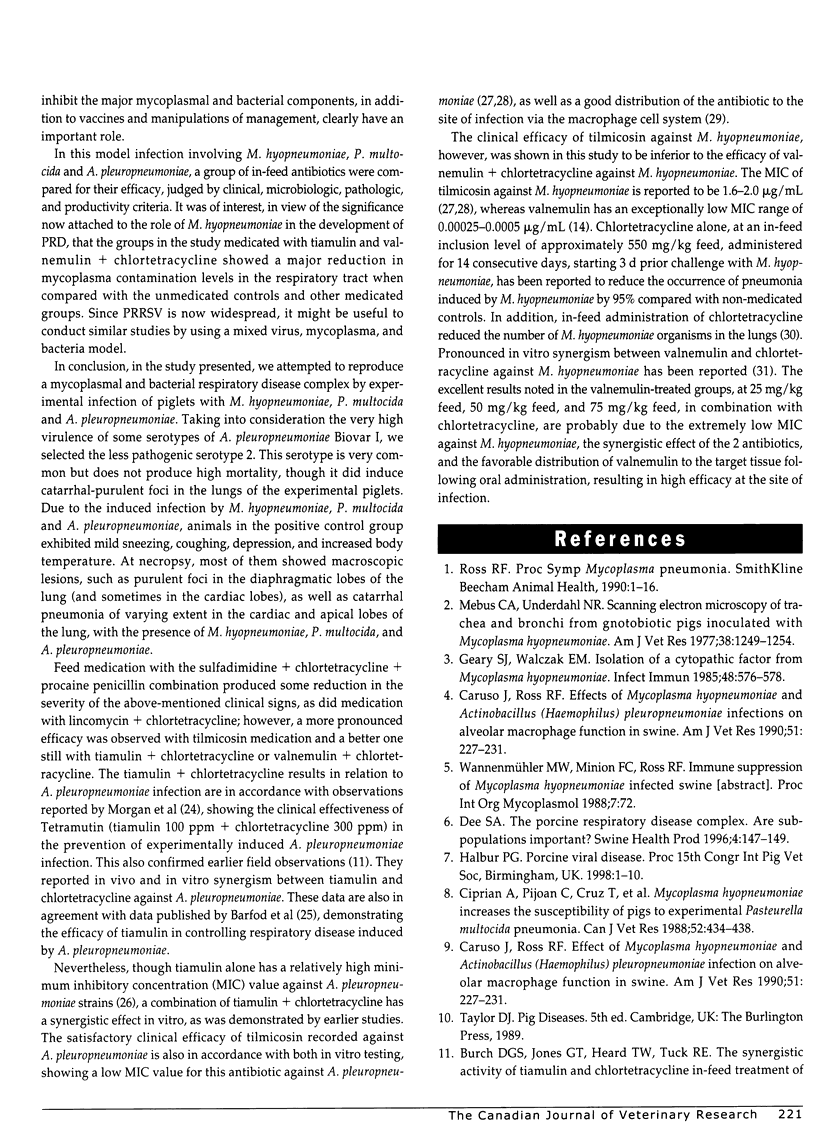
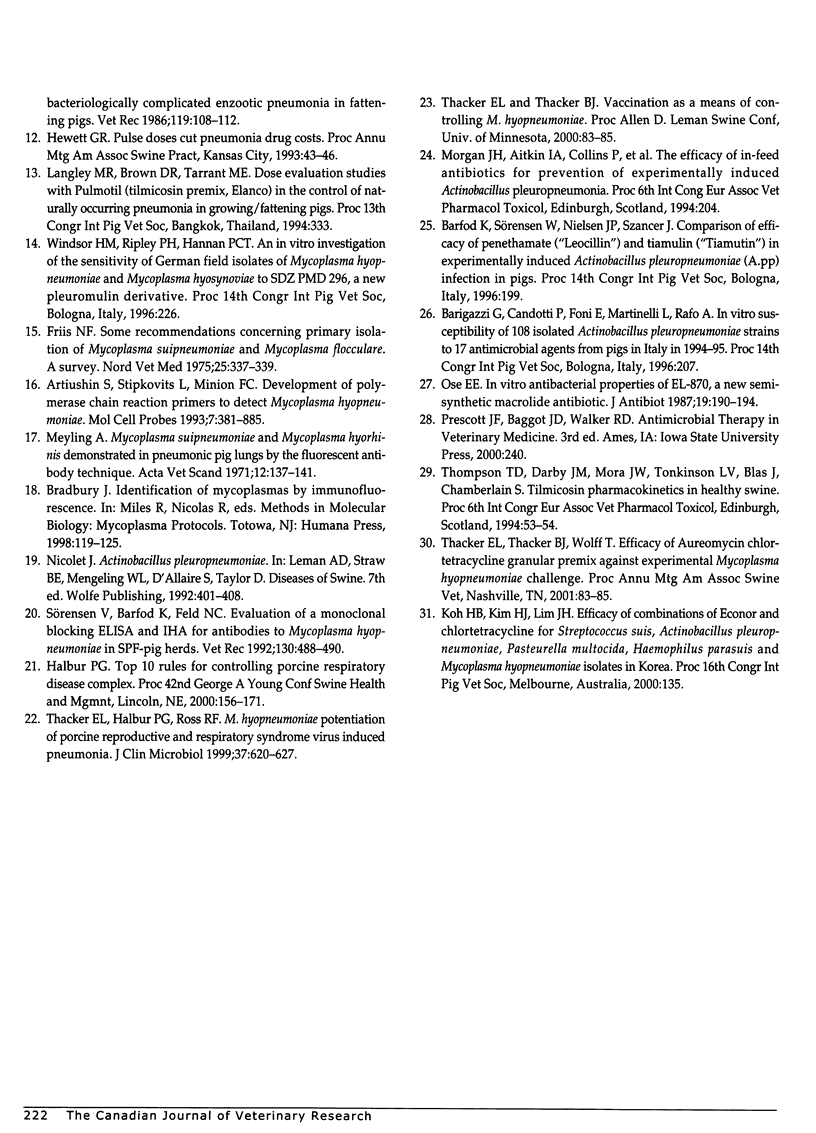
Selected References
These references are in PubMed. This may not be the complete list of references from this article.
- Artiushin S., Stipkovits L., Minion F. C. Development of polymerase chain reaction primers to detect Mycoplasma hyopneumoniae. Mol Cell Probes. 1993 Oct;7(5):381–385. doi: 10.1006/mcpr.1993.1056. [DOI] [PubMed] [Google Scholar]
- Burch D. G., Jones G. T., Heard T. W., Tuck R. E. The synergistic activity of tiamulin and chlortetracycline: in-feed treatment of bacterially complicated enzootic pneumonia in fattening pigs. Vet Rec. 1986 Aug 2;119(5):108–112. doi: 10.1136/vr.119.5.108. [DOI] [PubMed] [Google Scholar]
- Caruso J. P., Ross R. F. Effects of Mycoplasma hyopneumoniae and Actinobacillus (Haemophilus) pleuropneumoniae infections on alveolar macrophage functions in swine. Am J Vet Res. 1990 Feb;51(2):227–231. [PubMed] [Google Scholar]
- Caruso J. P., Ross R. F. Effects of Mycoplasma hyopneumoniae and Actinobacillus (Haemophilus) pleuropneumoniae infections on alveolar macrophage functions in swine. Am J Vet Res. 1990 Feb;51(2):227–231. [PubMed] [Google Scholar]
- Ciprián A., Pijoan C., Cruz T., Camacho J., Tórtora J., Colmenares G., López-Revilla R., de la Garza M. Mycoplasma hyopneumoniae increases the susceptibility of pigs to experimental Pasteurella multocida pneumonia. Can J Vet Res. 1988 Oct;52(4):434–438. [PMC free article] [PubMed] [Google Scholar]
- Friis N. F. Some recommendations concerning primary isolation of Mycoplasma suipneumoniae and Mycoplasma flocculare a survey. Nord Vet Med. 1975 Jun;27(6):337–339. [PubMed] [Google Scholar]
- Geary S. J., Walczak E. M. Isolation of a cytopathic factor from Mycoplasma hyopneumoniae. Infect Immun. 1985 May;48(2):576–578. doi: 10.1128/iai.48.2.576-578.1985. [DOI] [PMC free article] [PubMed] [Google Scholar]
- Mebus C. A., Underdahl N. R. Scanning electron microscopy of trachea and bronchi from gnotobiotic pigs inoculated with Mycoplasma hyopneumoniae. Am J Vet Res. 1977 Aug;38(8):1249–1254. [PubMed] [Google Scholar]
- Meyling A. Mycoplasma suipneumoniae and Mycoplasma hyorhinis demonstrated in pneumonic pig lungs by the fluorescent antibody technique. Acta Vet Scand. 1971;12(1):137–141. [PubMed] [Google Scholar]
- Ose E. E. In vitro antibacterial properties of EL-870, a new semi-synthetic macrolide antibiotic. J Antibiot (Tokyo) 1987 Feb;40(2):190–194. doi: 10.7164/antibiotics.40.190. [DOI] [PubMed] [Google Scholar]
- Sorensen V., Barfod K., Feld N. C. Evaluation of a monoclonal blocking ELISA and IHA for antibodies to Mycoplasma hyopneumoniae in SPF-pig herds. Vet Rec. 1992 May 30;130(22):488–490. doi: 10.1136/vr.130.22.488. [DOI] [PubMed] [Google Scholar]
- Thacker E. L., Halbur P. G., Ross R. F., Thanawongnuwech R., Thacker B. J. Mycoplasma hyopneumoniae potentiation of porcine reproductive and respiratory syndrome virus-induced pneumonia. J Clin Microbiol. 1999 Mar;37(3):620–627. doi: 10.1128/jcm.37.3.620-627.1999. [DOI] [PMC free article] [PubMed] [Google Scholar]


